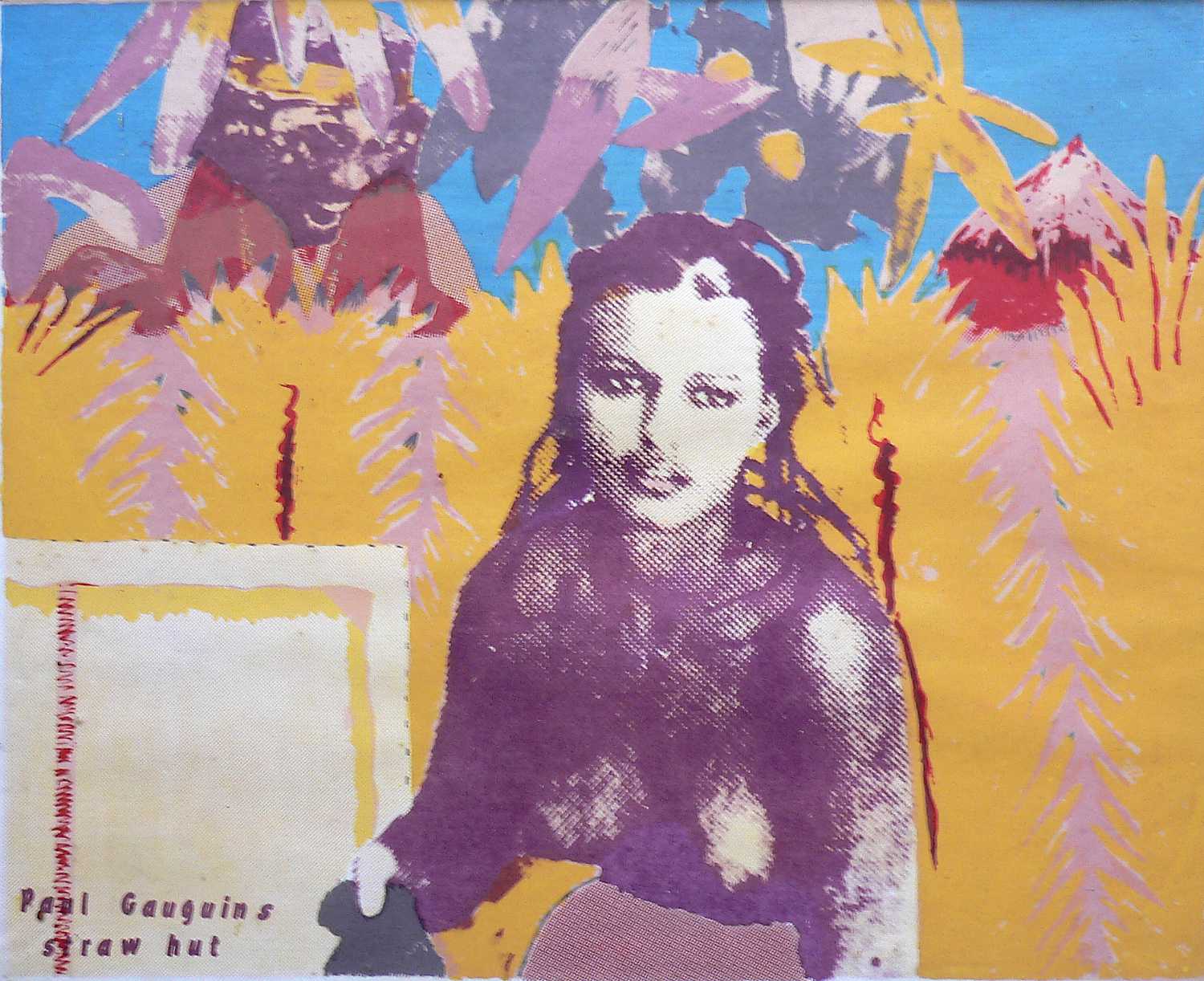
Paul Gauguin's Straw Hut
Circa 1978
Screen print
40 x 33 centimeters
Collection of The National Gallery of Australia
The appreciation of Paul Gauguin's art is inseparable from his bohemian lifestyle. His Tahitian paintings celebrate the myth of the uncorrupted 'noble savage', a concept which was in vogue amongst the European intellectuals of the latter half of the nineteenth century.
The idea of the noble savage was based upon the disenchantment with the negative aspects of European culture, in particular the moral shallowness of the bourgeoisie and the inequalities suffered by the new industrial proletariat. South sea cultures were viewed as innocent of the corrupting effects of modernity and in touch with their spirituality, plus the gentle tropical climate and landscape also offered a pleasant alternative to the chilly European winters. The irony was that the impecunious, alcoholic and diseased artist who had a fondness for young Tahitian women hastened the corruption of the islanders he chose to live with.
This print was made a few years after I graduated from art school and it was intended as an alternative to the modernist abstraction I had been taught to believe was the sole meaningful art practice. Compositionally the print contains imagery from a variety of sources, the woman escaping the lecherous Gauguin came from a soft-core porn magazine while a photo of a rock musician stood in for the artist. The crude aesthetic was designed to dispell any pretensions to serious art, it was aimed at my inner city peer group who enjoyed smoking joints and listening to loud rock music.
Backgound of the screen prints 1977-1981